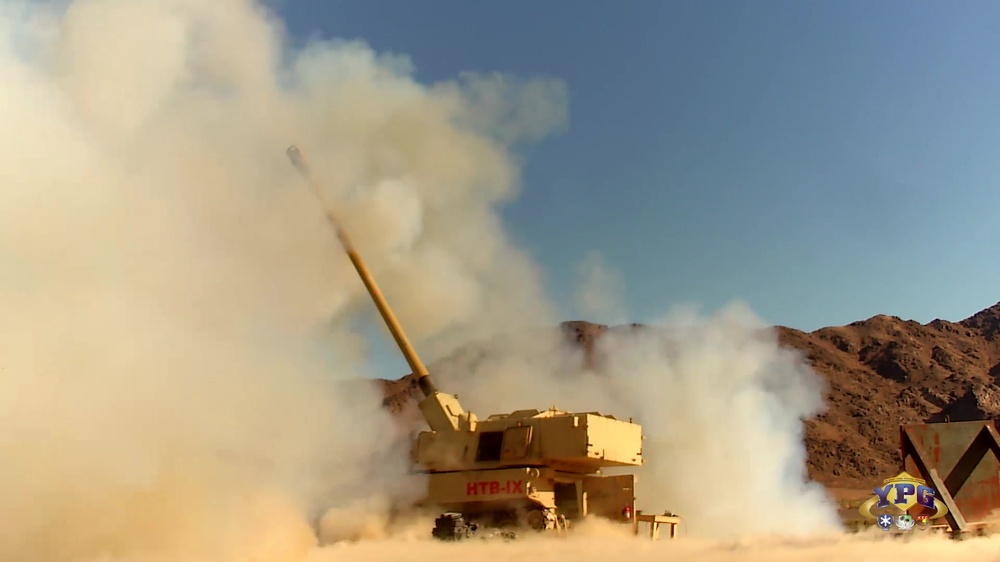Though the M777 is very light compared to nearly all other 155 mm howitzers,
it lacks the propulsion-capable APUs used in many other modern towed howitzers, such as the
FH-70 and G-5. The elevation and traversal of the M777 are completely unpowered. So the M777 has to be manhandled into position. There is also no rammer, so several crewman with a long, curved ramrod must physically drive each shell and powder charge into the breech with their own strength.
The main value of the M777's 4-ton weight was to be easy transportability by vehicles that couldn't handle the M198, but in practice, only heavy-lift helicopters and 6x6 cargo trucks are actually used to transport it in field conditions. Its much-vaunted transportability by
HMMWVs and helicopters as small as the
UH-60 are seldom attempted. This is probably due to safety regulations, and the gradual increase in the weight of the M777 since its initial field tests. The M777s are typically airlifted by a
CH-47 Chinook, a
CH-53E Super Stallion, or a
V-22 Osprey, all of which are a far cry from the UH-60 Blackhawk.
Reducing the weight of the weapon also has no effect on the weight or volume of its ammunition, nor the field supply trains required to carry it, which are a much more significant issue than transporting the weapon itself.
There are many problems with using titanium instead of steel, rooted in the fact that while it is similarly strong, titanium alloys are much less flexible (making them more prone to metal fatigue), and significantly harder (making them immensely expensive to machine).
The awkward proportions of the M777 also stem from the ruthless pursuit of weight reduction, and these present serious practical problems of their own. Also this artillery piece is too light for the powerful 155 mm ammunition. The lighter a weapon is that fires a given projectile and propellant charge, the more violent its recoil is. This has resulted in the recoil-absorption mechanisms in the M777 wearing out dangerously fast in combat conditions. It is highly doubtful that these issues with the M777 can be fully-resolved.
Another major issue with the M777 is that its tube length is dated. The US Army began using 155 mm/L39 howitzers in the 1960s, and by the early 1980s the 155 mm/L39 had been eclipsed in development, production, and proliferation world-wide by 155 mm/L45 howitzers. These, in turn, are being gradually supplanted across the world by 155 mm/L52 howitzers. The danger of having artillery with a much shorter range than that of the enemy has been graphically demonstrated in the South African Border War, the Rhodesian Bush War, the Yom Kippur War, and the Vietnam War. In all of these conflicts, the side whose guns had a shorter reach ended up being devastated, because their artillery was constantly suppressed by longer-range enemy fire, while larger quantities of shorter-range enemy artillery operated without fear of being bombarded. The advent of the Excalibur projectile also doesn't resolve this issue; though it has an impressive range of 39 km, equivalent ammunition fired from 155 mm/L45 and 155 mm/L52 weapons (such as the G-5-52 howitzer) still has significant range advantage, leaving the US military vulnerable to the same devastation their fire bases experienced in the Vietnam War, when they came under fire by the Soviet
M-46 130 mm field gun.
By 2016, the only operators of the M777 were Australia, Canada, and the United States. India has also recently placed an order for 145 M777A2s (though India has proven a dangerous market for artillery producers; this sale follows in the wake of the Denel and Bofors scandals, both resulting in the cancellation of major arms deals due to alleged improprieties). The only other nations so far committed to acquiring M777s are Saudi Arabia and Columbia. The UAE has expressed intent to acquire the ordnance of the M777, which with to create a self-propelled version.
The M777 has sold in large numbers and production continues. Approximately 1 200 pieces already completed. As of the recent deal to sell 145 M777s to India for $750 million, it has a unit cost of $5.17 million. However
the M777 has an unusually narrow customer base for an artillery piece on the market for over 20 years, despite also having extremely heavy publicity. This is mainly due to its high price tag. A typical 155 mm howitzer costs about 1/10th as much.






 M198 painaa n. 7230 kg, jos paunat muunnetaan metriseen yksikköön. Vajaan kymppitonnin painoisen vanhan veturin kanssa yhdistelmälle kertyy painoa n. 17 tonnia eikä aiemmin mainitsemani n. 20 tonnia. Joka tapauksessa vanha yhdistelmä on varsin samoissa uuden kanssa (n. 18 tonnia).
M198 painaa n. 7230 kg, jos paunat muunnetaan metriseen yksikköön. Vajaan kymppitonnin painoisen vanhan veturin kanssa yhdistelmälle kertyy painoa n. 17 tonnia eikä aiemmin mainitsemani n. 20 tonnia. Joka tapauksessa vanha yhdistelmä on varsin samoissa uuden kanssa (n. 18 tonnia).